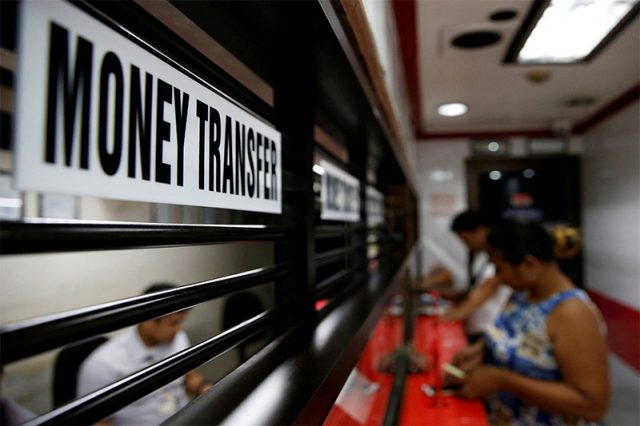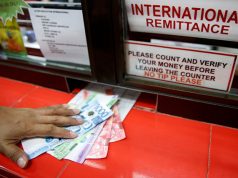
Seafarer Jhan Kharl Rodica recently returned home to Manila after an eight-month voyage and bought a townhouse outside the city, courtesy in part, he said, of the U.S. dollar’s best year in a generation.
A marine engineer who worked at an oil tanker around Africa and Asia this year, Rodica is paid in dollars and has been wiring extra cash back home – part of a worldwide trend that has driven a surge in remittance volumes as the dollar has climbed.
The cash is well received in countries, such as the Philippines, where living costs are soaring, providing a lifeline for families and even some smaller economies that depend on it. The World Bank estimates remittances to low and middle-income countries will rise 4.2% to $630 billion this year, and the flow is another sign of the far-reaching consequences of the dollar’s gains.
The U.S. dollar index =USD, which measures its performance against a basket of major currencies, is up 14.5% this year.
It has climbed more than 20% against some smaller currencies that see sizeable remittance flows, such as the Bangladesh taka BDT= or Pakistani rupee PKR=, which is encouraging workers to send extra cash.
“When there is strength in the U.S. dollar, often we see an increase in new U.S. customers… as well as customers in certain markets seizing the opportunity to get more local currency home,” said Pankaj Sharma, executive vice president for global remittance business management at Remitly.
Transfer volumes at Remitly RELY.O leapt 44% to $7.5 billion in the September quarter. Larger rival Wise WISEa.L said volumes were up 49% to 24.4 billion pounds ($28.2 billion) in the July quarter. Wise shares have more than doubled since July.
MoneyGram International MGI.O and PayPal Holdings PYPL.O have also posted an uptick in turnover and transactions in their third quarter.
The jump is all the more noteworthy as remittances, rooted in necessity, have long been steady and reliable flows, and more sensitive to employment and growth than currency moves.
The dollar plays an outsized role in remittance transfers because a lot of wage earners are paid in the U.S. currency, or, for expatriates in places such as Hong Kong or the Persian Gulf, currencies pegged to it.
To be sure, currency moves do not change the prime motive for such payments and plenty of those sending money back home are insensitive to them.
“You never know what will happen with these rates,” said Albert Javier, a Filipino-American living in the United States who has been sending remittances for nearly two years.
“I totally understand people waiting it out and gunning for the prime exchange rate, but to me, it is more important that my family gets the money they need, when they need it.”
Still, Western Union WU.N and Wise both noted currencies’ relative strength do tend to influence volumes, and for Rodica, the Filipino sailor, who is 26, it has provided a cushion for his partner and twin daughters in uncertain times.
“When I started my career in seafaring couple of years ago, a dollar was around 47 pesos, but right now it is over 58 pesos,” said Kharl, an increase of more than 23%.
“Some of us get to match or not get too affected by inflation because we earn in U.S. dollars.”
—Reporting by Harish Sridharan in Bengaluru; Additional reporting by Neil Jerome Morales in ManilaEditing by Tomasz Janowski









